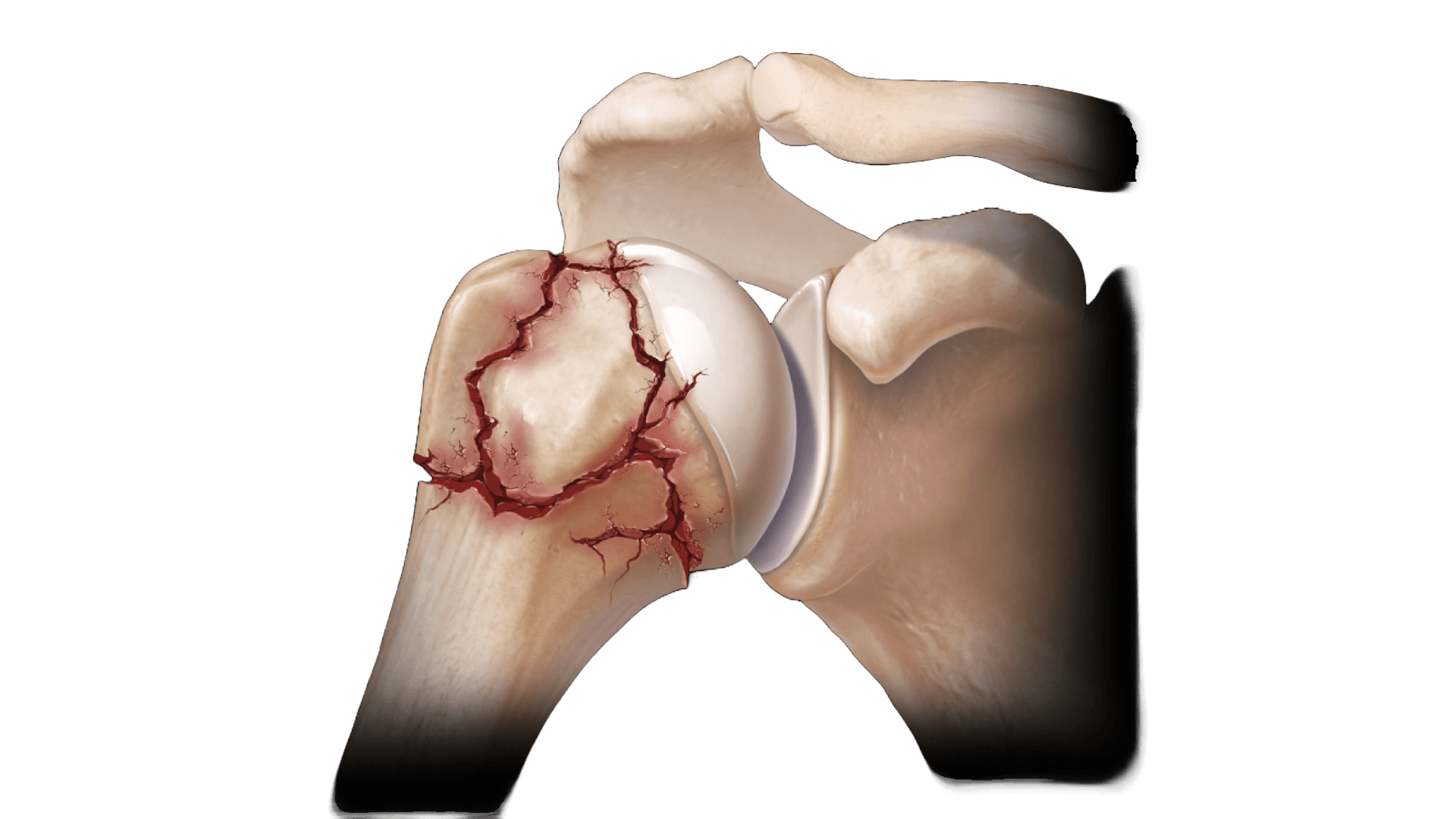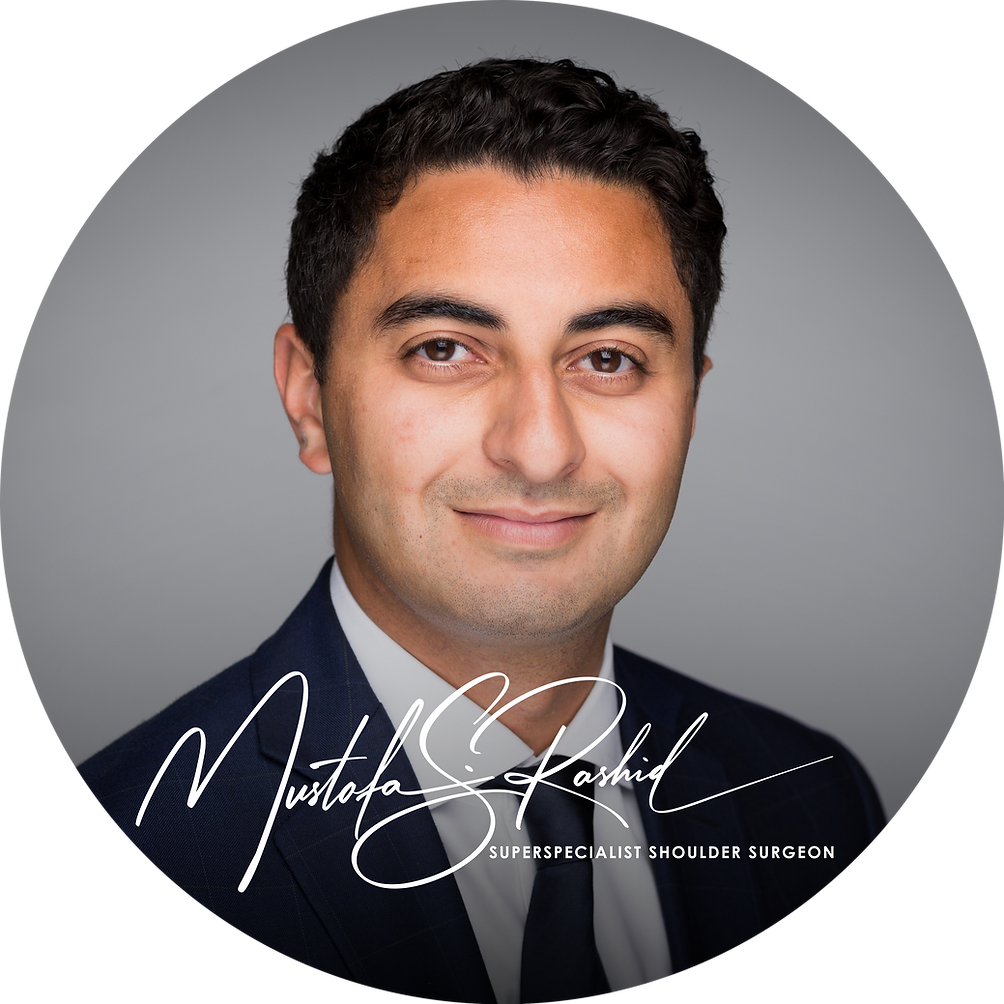Shoulder Fractures

Anatomy and Function
The shoulder is made up of a ball and socket joint. The ball, can break when someone falls heavily on their shoulder. These types of fractures often require a specialist opinion to determine the optimal method of treatment.
The ball of the shoulder has important muscles that attach to it. These muscles can often pull on fracture fragments, causing them to move out of place.
Causes and Risk Factors
In patients with primary osteoarthritis of the shoulder, there is often no clear cause. In rotator cuff arthritis, patients may not recall any a traumatic event that caused their rotator cuff tear in the past. Both conditions often start insidiously and become symptomatic as we get older (often >65 years old).
Types of shoulder fractures
Some shoulder fractures involving the ball of the shoulder will not have moved out of position and will likely heal and do well without surgery. However, when there are more “parts” to the fracture, especially if those parts have moved out of position, the outcomes of treatment are often worse. Rarely, the ball of the shoulder may dislocate out of the socket as well as break into various parts. This type of fracture dislocation requires surgery to avoid a poor outcome.
Symptoms
In the first 4 weeks, pain is the most common feature of shoulder fractures. Most patients will also feel like the bones are moving around when they move their arm, even a small amount. Whilst this may feel uncomfortable, you are not causing any additional damage when this happens. It is very common for significant bruising down the whole arm, even into the fingers. This is normal for this type of break. Sleeping in the first month is difficult as your fracture will often move and cause pain when the elbow moves backwards to rest on the bed.
Diagnosis
Shoulder fractures are diagnosed by x-rays that confirm what is broken and how many parts. Dr. Rashid will often use a CT scan to get a 3D picture of your break to assess how bad the fracture is and how far the parts have moved out of position.
Early Treatment
Supporting the arm with a sling will provide pain relief however, the sling will not help the fracture heal any better or quicker. Pain relief is also often required for most people.
Will my fracture heal?
The majority of collarbone fractures will heal without any surgical treatment. Healing is not the major concern in this situation. What is more important, is what resulting function can be achieved if the fracture were to heal in the position that it is in, without intervention. One of the major issues with these injuries, is that after the fracture has healed, there can be prolonged stiffness that can take a long time (up to a year) to resolve. That is why Dr. Rashid will often show you how to safely move the arm and shoulder before the fracture is healed. This is intentional to avoid prolonged stiffness.
Surgical Treatment Options
For most people, surgery does not necessarily mean a better outcome. Dr. Rashid will guide you to provide you with all the information you need, to make the right choice for you. Surgery comes in many types for these types of breaks. Your age, activity level, and attitude towards surgical risks are all important. Some patients may choose to have their fracture fixed. This can be done with a plate and screws, or with a rod and screws. Older patients may choose to have their shoulder replaced with a reverse shoulder replacement.
Risks of surgery
Like any operation, shoulder fracture surgery has risks. Although these are not common, they are significant. Dr. Rashid will explain these risks to you in detail if you choose to consider surgery. Surgery is performed under general anaesthetic. The risks are different for different types of surgery. Risks include scar, infection, non-healing (around 3% of all surgically treated fractures), nerve injury, stiffness, and irritation of the implants. Other risks include the bone not healing, or even the bone dying, arthritis, and implant failure. If you choose to have a reverse shoulder replacement, other risks such as dislocation, loosening, and causing a fracture elsewhere in the shoulder are risks. Dr. Rashid utilises specific techniques and the most modern implants to reduce these risks, but they are never zero.
Self-Management and Lifestyle Tips
It important to understand that your fracture will most likely heal, even without using the sling. The sling is a useful adjunct to pain relief, but after a few weeks, becomes a device that can increase stiffness. Sleeping with a pillow in the first few weeks, behind your elbow, will help support your arm.
About the Author

Mustafa Rashid
Dr. Mustafa Rashid is an award-winning, well published superspecialised surgeon from the UK, specialising in shoulders
